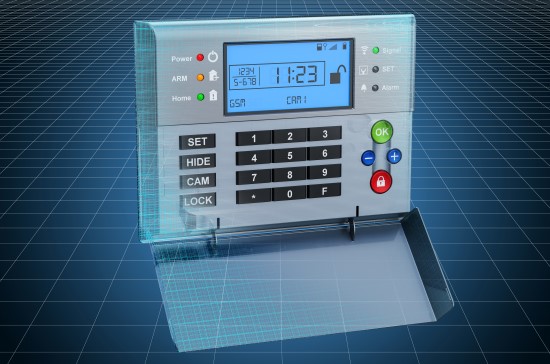Harnessing the Power of AI for Mid-Scale Businesses: How AlgoShift Can Help
As mid-scale businesses grow, they face unique challenges and opportunities. To stay competitive and efficient, these businesses must leverage advanced technologies that can enhance operations, drive innovation, and improve customer satisfaction. Artificial intelligence (AI) offers transformative solutions that can help mid-scale businesses achieve these goals. At AlgoShift, we specialize in guiding mid-scale businesses through the process of AI integration, enabling them to harness the full potential of this powerful technology.
Why AI for Mid-Scale Businesses?
Mid-scale businesses often operate in dynamic markets where agility and efficiency are critical. AI can help these businesses by automating complex processes, providing deep insights from data, and enhancing customer interactions. Here’s how AI can transform mid-scale business operations:
Boosting Operational Efficiency
Efficiency is vital for mid-scale businesses looking to maximize productivity and minimize costs. AI can automate a wide range of tasks, from routine administrative functions to more complex operational processes. For example, AI-driven robotic process automation (RPA) can handle repetitive tasks such as data entry, invoicing, and compliance monitoring, freeing up employees to focus on strategic initiatives. Additionally, AI can optimize supply chain management by predicting demand, managing inventory, and improving logistics, leading to significant cost savings and operational efficiencies.
Enhancing Customer Experience
In today’s competitive landscape, delivering exceptional customer experiences is essential. AI can help mid-scale businesses provide personalized and responsive customer service. AI-driven chatbots and virtual assistants can handle customer inquiries 24/7, providing instant support and improving customer satisfaction. Moreover, AI-powered analytics can help businesses understand customer behavior and preferences, enabling them to tailor their offerings and marketing efforts to better meet customer needs.
Driving Innovation and Growth
AI can drive innovation by providing businesses with valuable insights and enabling data-driven decision-making. Mid-scale businesses can use AI to analyze market trends, identify new opportunities, and optimize their product development processes. For example, predictive analytics can help businesses anticipate market shifts and adjust their strategies accordingly. AI can also enhance research and development efforts by analyzing vast amounts of data to identify patterns and insights that can inform new product ideas and improvements.
Reducing Costs and Increasing Profits
AI offers numerous opportunities for cost reduction and profit maximization. By automating tasks and improving efficiency, AI can significantly reduce operational costs. For instance, AI-driven predictive maintenance can identify potential equipment failures before they occur, minimizing downtime and reducing repair costs. Additionally, AI can optimize pricing strategies by analyzing market conditions and customer behavior, helping businesses maximize revenue and profitability.
Practical Applications of AI for Mid-Scale Businesses
AI-Powered Sales Forecasting
- Description: Utilize AI to predict future sales trends and optimize inventory management.
- Benefit: Better inventory planning, reduced stockouts and overstock, improved sales efficiency.
Customer Segmentation and Personalization
- Description: Use AI to segment customers based on behavior and preferences and deliver personalized marketing campaigns.
- Benefit: Increased customer engagement, higher conversion rates, improved customer loyalty.
Supply Chain Optimization
- Description: Implement AI to manage supply chain processes, from demand forecasting to logistics.
- Benefit: Lower logistics costs, improved supply chain efficiency, reduced waste.
Quality Control Automation
- Description: Use AI-driven tools to automate quality control processes in manufacturing and production.
- Benefit: Reduced defects, higher product quality, lower production costs.
Employee Performance Management
- Description: Implement AI tools to track and analyze employee performance and provide actionable insights.
- Benefit: Improved employee productivity, better talent management, enhanced workforce planning.
AI-Driven Market Analysis
- Description: Use AI to analyze market trends, competitive landscapes, and customer feedback.
- Benefit: Better market positioning, more effective business strategies, increased competitiveness.
Predictive Analytics for Marketing
- Description: Utilize AI to predict customer behavior and optimize marketing campaigns.
- Benefit: Higher ROI on marketing spend, improved campaign effectiveness, better customer targeting.
Automated Financial Reporting
- Description: Use AI to automate financial reporting and analysis processes.
- Benefit: Increased accuracy, reduced time and effort, better financial insights.
AI-Powered Fraud Detection
- Description: Implement AI systems to detect and prevent fraudulent activities.
- Benefit: Enhanced security, reduced financial losses, improved risk management.
Dynamic Pricing Models
- Description: Use AI algorithms to adjust pricing based on real-time market conditions and demand.
- Benefit: Maximized revenue, competitive pricing strategies, better profitability.
How AlgoShift Can Help
At AlgoShift, we understand the unique challenges and opportunities faced by mid-scale businesses. Our approach is tailored to meet the specific needs and goals of each business, ensuring that AI integration delivers maximum value. Here’s how we can help:
Consultation and Strategy Development: We begin by understanding your business objectives and identifying areas where AI can have the most impact. Our experts work with you to develop a customized AI integration strategy.
Custom AI Solutions: Based on your specific needs, we design and implement AI solutions that address your business challenges. Whether it’s automating processes, enhancing customer experiences, or providing data-driven insights, we have the expertise to deliver.
Training and Support: We provide comprehensive training for your team to ensure they can effectively use AI tools. Our ongoing support ensures that your AI systems continue to perform optimally and deliver value.
Continuous Improvement: The AI landscape is constantly evolving, and we stay at the forefront of these advancements. We continuously refine our solutions to ensure your business benefits from the latest innovations.
Embrace the Future with AlgoShift
Mid-scale businesses have the potential to achieve significant growth and success with the right tools and strategies. By integrating AI into your operations, you can streamline processes, enhance customer experiences, drive innovation, and reduce costs. At AlgoShift, we are here to guide you through this exciting journey and help you harness the power of AI to transform your business.
Contact us today to learn more about how we can help your mid-scale business thrive in an AI-driven world.
